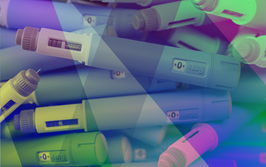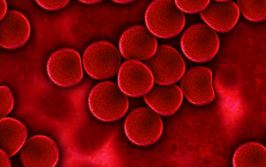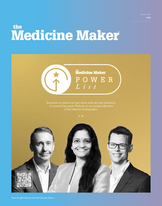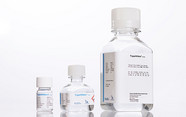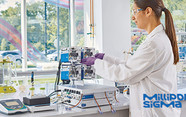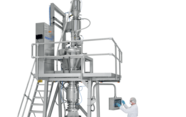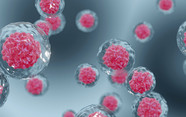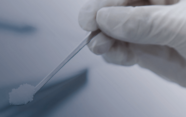
Squid-Inspired Drug Delivery
Here’s how researchers took lessons from cephalopods to develop a new capsule that can deliver drugs, including insulin and siRNA, orally
Stephanie Vine | | 4 min read | News
Researchers at MIT, Brigham and Women’s Hospital, and Novo Nordisk have designed a capsule that emits complex drugs in a liquid jet that can penetrate tissue.
The approach draws inspiration from squids and other cephalopods that use pressurized fluid expulsion for movement and defense. Cephalopods contract their mantle cavity to force water out through their siphon in a controlled jet.
To achieve this using an oral capsule, the team designed two approaches: one using compressed carbon dioxide and one using tightly coiled springs. There is a sugar plug mechanism that dissolves in the stomach to propel the API out of the capsule. Different versions of the capsule were designed that could target different parts of the digestive tract.
Giovanni Traverso – director of the Laboratory for Translational Engineering and associate professor of mechanical engineering at MIT and lead author of the study – has a long history of innovative drug delivery projects. Meanwhile, Novo Nordisk has been looking for new ways to overcome challenges in biologic delivery. We spoke with Traverso to learn more.
How did you come up with the idea for this capsule?
The concept emerged from the need to solve a fundamental problem: delivering biologics to the gastrointestinal tract without relying on needles. During brainstorming, the team looked to nature for inspiration and was captivated by cephalopods, which use highly efficient jet propulsion to maneuver precisely in their environments. By mimicking this mechanism, we realized we could design a system that ejects drugs as a high-pressure jet, targeting the submucosal layers of the GI tract without the need for solid needles.
This project builds on previous work. What lessons have you learned and how were they applied?
Through buiding on prior systems such as SOMA and L-SOMA, which used solid milliposts for drug delivery. Key lessons included:
- Tissue safety. Although injections in the GI tract are relatively common for gastroenterologists, we wanted to develop strategies that could remove the need for a physical injection for the potential for reduced risk.
- Drug retention and absorption. Earlier SOMA/L-SOMA systems were stomach-specific, but this new platform can accommodate both tubular (e.g., esophagus, small intestine) and globular (e.g., stomach, colon) GI regions. We had also developed a prior platform called LUMI that could target the small intestine.
- Deployment mechanisms. Developing sugar plugs and spring systems taught us the value of time- and environment-sensitive triggers, which were further refined for this project.
What were the challenges involved in making the new capsule work?
We had to optimize the jet pressure using precise engineering to create sufficient force to penetrate the tissue without causing damage, while also ensuring that the device deployed at the correct location in the GI tract. Extensive testing of sugar plugs and pH-sensitive triggers was required, and incorporating the jet system, drug reservoirs, and control mechanisms into a miniaturized, ingestible format posed significant design constraints. We also had to ensure that all components were biocompatible and durable enough to withstand the GI environment.
What tests have been done so far?
We have conducted extensive preclinical tests in large animal models, including pigs and dogs. These studies demonstrated:
- High bioavailability of biologics such as insulin, GLP-1 analogues, and siRNA, comparable to subcutaneous injection.
- Safe transit of the capsules through the GI tract without adverse effects or tissue damage.
- Precise targeting and successful deployment in both axial and radial configurations.
- Histological analysis also confirmed no mechanical tissue damage, validating the safety of the jet mechanism.
Future work will emphasize further miniaturization, such as reducing the size of both axial and radial devices for easier ingestion, broadening applications to more drugs, and testing repeated use and cumulative effects.
Is the publicity around insulin and GLP-1s fueling demand for needle-free delivery?
Absolutely. The growing popularity of GLP-1 receptor agonists and the critical role of insulin in diabetes management have spotlighted the need for alternative delivery methods. Patients are seeking more convenient, less invasive options, and needle-free systems address both physical discomfort and the psychological stigma associated with injections. Additionally, the rise of biologics beyond diabetes, such as in oncology and gene therapy, has created a broader demand for platforms capable of delivering macromolecules effectively without needles. I think it is important to recognize that Novo Nordisk has an approved version of semaglutide (Rybelsus), which uses the SNAC enhancer (developed by Emisphere) and achieves 1-2 percent oral bioavailability. The fundamental challenge we set out to address was to enhance oral delivery bioavailability by more than 10 times.
Why is drug delivery such an interesting field to work in?
Drug delivery combines engineering, biology, and medicine to solve some of the most pressing healthcare challenges. It’s a field where you can translate fundamental science into tangible products that improve lives. Personally, I find it rewarding to bridge the gap between patient needs and technological innovation. There’s also an immense sense of satisfaction in collaborating with interdisciplinary teams to tackle complex problems, whether it’s miniaturizing a device or pioneering a new delivery mechanism.
Needle-free systems have the potential to democratize access to biologics, especially in resource-limited settings. They also pave the way for new therapeutic possibilities, from oral gene therapies to non-invasive cancer treatments. The field of drug delivery is only just beginning to scratch the surface of what’s possible, and I’m excited to see how these technologies evolve in the coming years.
Original image sourced from: Adobestock.com

Making great scientific magazines isn’t just about delivering knowledge and high quality content; it’s also about packaging these in the right words to ensure that someone is truly inspired by a topic. My passion is ensuring that our authors’ expertise is presented as a seamless and enjoyable reading experience, whether in print, in digital or on social media. I’ve spent fourteen years writing and editing features for scientific and manufacturing publications, and in making this content engaging and accessible without sacrificing its scientific integrity. There is nothing better than a magazine with great content that feels great to read.


